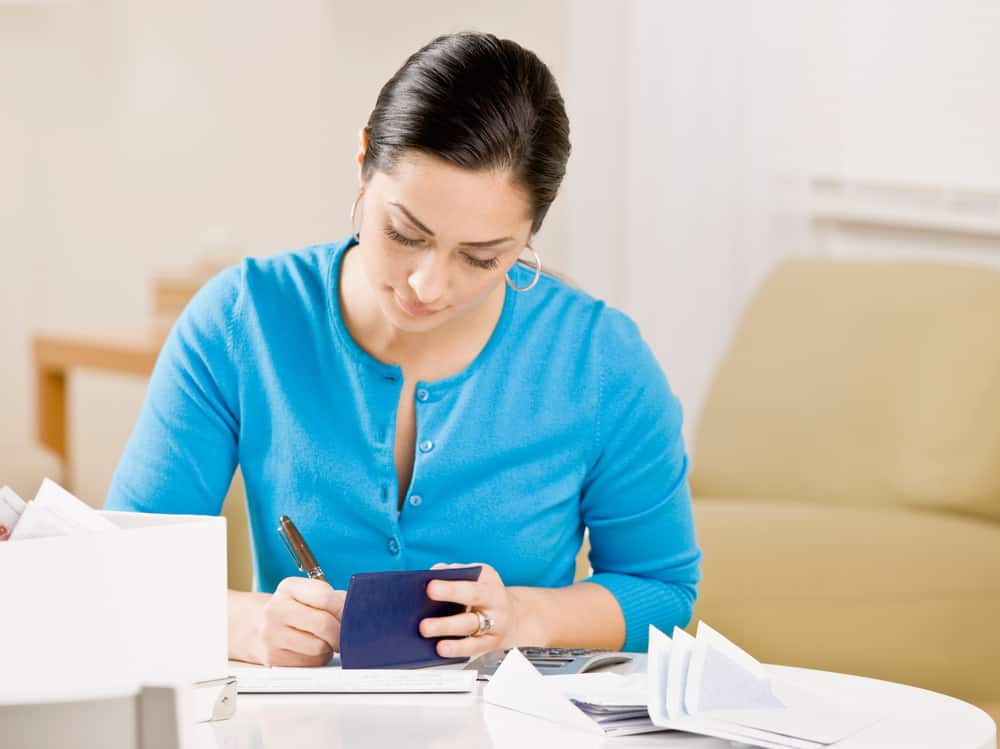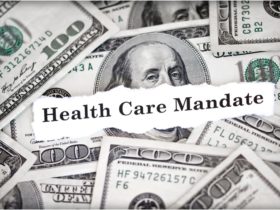The rise of credit cards, debit cards, and payment apps has made it easier than ever to have access to your checking account without the need to pull out your checkbook. However, there are still times when only a check will do. If you’ve never had to utilize this form of payment before, you may be left wondering how to write a check when you need it.
Table of contents
- What Are the Features and Benefits of Writing a Check?
- Who Writes Checks?
- When Should You Write Checks?
- Examples of Where To Get Checks
- The Steps of How To Write a Check
- Quick Questions
What Are the Features and Benefits of Writing a Check?
Writing a check offers several benefits that you may not receive when you pay another way. For instance, some companies, such as those that provide your home’s utilities, offer “convenience fees” for making online payments with a credit or debit card. These fees can be significant, while the company will usually accept a check without any additional fees.
Checks can also be safer than other forms of payment. If you send cash in the mail, anyone will be able to open the envelope and use that cash however they want. If someone finds a check, though, most financial institution’s security measures should make it impossible for the thief to deposit the check. Even if someone was able to do so, your bank or credit union would be able to trace when and where that check was deposited and likely recover the funds for you.
Most checkbooks also come with a register that allows you to record when you’ve written a check and how much it was worth. As you learn how to write a check, it’s essential to establish this as part of your financial habits. This makes it easier for you to reconcile your checking account statements and resolve errors should your account balance not match expectations.
Who Writes Checks?
There are several groups of people and organizations still regularly using checks. Most small and medium businesses, for example, use checks as their main form of payment. When they send out invoices, they are usually expecting a check in return for their records. When they pay their bills, they use a check so they can have a physical record of the payment.
Seniors
Elderly people are the most likely to write checks. Some still use them even for small payments, such as meals at a restaurant.
Millennials
Surprisingly, 42% of millennials still use checks. This may stem from the generation’s strong participation in the gig economy.
Business Owners
As recently as 2016, the Washington Post estimated that 97% of small businesses used paper checks to make payments. Many larger companies still issue paper checks, as well.
Additionally, while most companies provide their employees with some form of direct deposit that allows for pay to be issued directly into the employees’ bank account, there are still some companies with payroll departments that issue physical checks instead. This makes knowing how to write a check an essential responsibility for these companies, especially if they handle their payroll in-house.
There are also plenty of individuals who prefer to write a check instead of using an alternative payment method. They may prefer to have a physical record of the payment or want a more secure way to send a gift of money through the mail.
When Should You Write Checks?
There are a couple of situations where it is important to know how to write a check. The first would be when giving the gift of money to someone, especially if you’re not there to gift it in person. Birthday parties, weddings, and similar family events are an excellent opportunity to practice your check-writing skills.
The other example is paying a bill. When you write a check, there’s a physical record of the payment being made. Anyone who has had issues with a utility company not receiving a payment in the mail knows how important having the check number, date, and amount is to avoid late payment fees when there’s been a mail mixup.
Examples of Where To Get Checks
Perhaps the first step of learning how to write a check is learning where to get them. Some banks and credit unions provide checks for free as part of their offered benefits package to customers.
Even if your financial institution doesn’t offer free checks, you should be able to pay for a checkbook. You’ll be able to choose a specific design and include any additional information, such as your phone number, that you’d like included.
You can also order a checkbook from third-party vendors. You’ll need to provide them with the necessary information, including your checking account and routing number, so make sure you choose a reputable vendor.
Example 1: Jenny visits a car dealership to test drive a vehicle just for fun. She believes it is out of her price range, but the salesperson offers a discount if she takes the car off the lot that day. It is late evening, and banks are closed. Jenny has excellent credit, so the salesperson accepts her trade-in vehicle and a personal check for $5,000 as a down payment.
Example 2: Ben is a small business owner with exceptional sales skills but limited time to fulfill client orders. He pitches his landscaping skills to residents of 55-plus communities who are no longer agile enough to tend to their gardens alone. Every week, five other contractors help him finish the work. Every Friday evening, he reconciles the accounts and mails off their check payments.
The Steps of How To Write a Check
When you’re writing your check, you’ll have several fields you need to fill in:
- Date: This should be the date you’re writing the check.
- Payee: This is the name of the person, company, or group to whom you’re making out the check.
- Amount: This box is filled in with the amount of the check in numerical form.
- Dollars: This line is the amount of the check written out in words. If there’s a discrepancy between the written amount and the numerical amount, financial institutions will refer to the amount written in words.
- Memo: This field is optional and is typically filled in to remind the payee what the payment is for. For bills, the memo is often your account number.
- Signature: You’ll sign the check on the line in the lower right corner.
Quick Questions
Can you postdate a check?
Postdating a check is when you write a date in the future instead of today’s date. You can technically do this, but it doesn’t affect the ability of the check to be deposited before that date.
How can you best ensure the check isn’t altered?
Write the numerical amount as far to the left inside the box as possible. Also, use all capital letters when writing out the amount in words and try to fill the entire line.
How do I write a cashier’s check?
The checks you write are called personal checks. Cashier’s checks are written by and backed by the bank, at your request.
What if I didn’t get a check register or I can’t find it?
You can use any method to record details about the checks you wrote. This may include a notebook, Google spreadsheet or relevant app.
How can you best ensure the check isn’t altered?
Write the numerical amount as far to the left inside the box as possible. Also, use all capital letters when writing out the amount in words and try to fill the entire line.
What can I do to prevent people from adding things to the check?
When writing out the worded figures, write them in large letters and then draw a line through the empty space remaining. Follow a similar premise for numerical values. Also, never give someone a signed blank check.
When should you fill out your check register?
You should fill out your check register immediately after writing a check. While not required, this is a good practice that improves your financial recordkeeping.
Learning how to write a check is a basic form of financial literacy, but it can be intimidating if you’ve never done it before. Now that you’re an enlightened check writer check out our guide to account balances here.











Leave a Reply